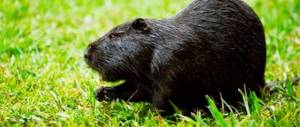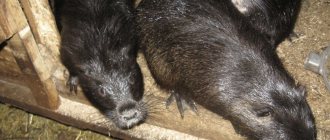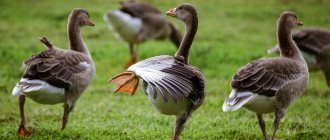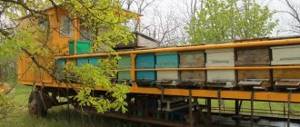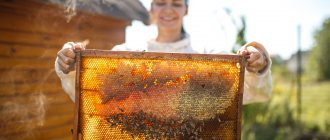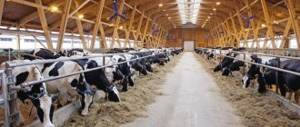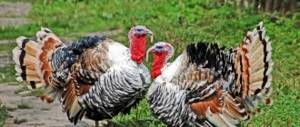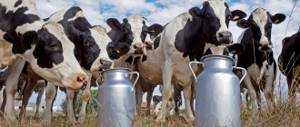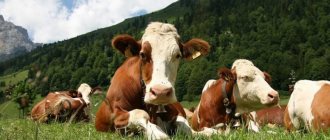Buying an animal
To begin with, it is recommended to buy young animals. Their age should be no more than 2-3 months. The average weight of such animals is 1.3-2.3 kilograms. It is recommended to buy animals in special nurseries.
Expert opinion
Zarechny Maxim Valerievich
Agronomist with 12 years of experience. Our best country expert.
Ask a Question
If purchasing from private breeders, it is worth visiting the farm and familiarizing yourself with the conditions in which the animals are kept. It is not worth buying nutria on the market, as there is a risk of purchasing low-quality animals.
Before buying animals, you should study their varieties. There are several types of nutria:
- Standard - in color they resemble wild animals. Their fur has a brown or steel tint. Animals are highly fertile. There are up to 6 puppies in 1 litter.
- Golden - this breed was imported from abroad. The weight and size of the animals coincide with the standard ones. In this case, 1 female brings up to 4 puppies.
- Blacks are an Argentinean breed. The parameters of her fertility coincide with the standard one. Purebred animals are distinguished by their deep black color and dark gray fluff.
- White Azerbaijani - have pure white hairs. Usually nutria give birth to a maximum of 4 puppies.
- Italian whites - come in white or cream. There is usually a maximum of 5 puppies in a litter.
Tips on how to breed nutria
To get healthy offspring and update the nutria population, you need to know how to breed them correctly. In the fourth or fifth month of life, nutria reach sexual maturity. But experienced fur breeders advise waiting to reproduce for up to seven months. By this time, the animals weigh 4-5 kg and are ready to produce healthier offspring.
Pregnancy lasts 130-135 days. Cubs (4 to 6 on average) are usually born at night. The feeding period is 40-60 days. The female becomes ready to mate every 25-30 days. This can be understood by her behavior: she becomes restless and loses her appetite.
There are several breeding methods:
- Kosyachny. From females for the first mating, from 3 to 14 individuals are taken, raised in one cage for up to 5-6 months, then a male is placed there. A variation of this method is the family method, when for the first mating they take littermate females and introduce an older male to them.
- Corral (free). The entire population of several males and dozens of females is kept together. Pregnant females are periodically identified and placed separately.
- Paired. One female is kept with one male.
After giving birth, the female is ready for mating within two to three days.
Selecting a site and premises
The premises for breeding animals must meet the following criteria:
- brick or wooden building;
- availability of adequate ventilation;
- dry air;
- purity.
See also
How to properly cut nutria and how long it grows before slaughter, equipmentRead
It is recommended to install cages in the house. They should be located 70 centimeters from the floor. It is recommended to prepare the room in advance. In this case, the floor should be covered with bedding, and the wooden walls should be covered with metal mesh. Monitoring temperature parameters is of no small importance. In summer, it is recommended that animals have access to a pond or a container with water. This helps prevent heat strokes in animals.
Where and when to buy young nutria
There are many farms in Russia where these valuable animals are bred. When drawing up a business plan, it is advisable to visit one of them to understand how to properly handle rodents, what they love and what to fear, and also to receive valuable advice from professional breeders. Often on such farms you can buy young nutria at an affordable price in almost any quantity. Individuals are also sold in local rabbit breeding communities and markets.
Before purchasing, you must carefully examine the animal; its fur should be shiny and the guard hairs should be brightly colored. Dull, tousled fur is evidence that the nutria was poorly fed. A sign of health is bright orange, strong incisors; they should not have dark spots or chips. Sick individuals cannot reproduce healthy offspring.
The skin should also be free of ulcers, abrasions and other signs of disease. Buying nutria cheaper for breeding in order to remove them in the future is unprofitable, the animal will simply die, and the owner will incur extra expenses. Sick animals are not sold for meat; strict sanitary conditions apply in this area.
Having decided on the question of where to buy nutria for breeding, choose the right time of year for the establishment. It is optimal to go for animals from late spring to early autumn, when it is warm. In this case, the buyer will be able to carefully examine the nutria and transport it in a bag, net or closed basket with holes for air. There is no need for bulky insulated cages. It’s easy to build cages for nutria with your own hands; a plywood sheet, metal mesh or wooden boards will do.
Note! Adult nutria are transported one at a time so that they have maximum free space. This rule applies especially to pregnant females or large adult males. Animals must have unhindered access to air. If transportation is long, you should take care of feeding.
Features of care
When breeding nutria, it is important to provide them with suitable conditions:
- Rodents should not be exposed to drafts or direct sunlight.
- It is recommended to zone the room with enclosures. A place to live, a walking area, and feeding troughs are placed separately.
- For active development and weight gain, animals require space. 200 cells are placed on 0.5 hectares. It is permissible to place 350 animals in them.
- Enclosures can be separated from each other by wooden partitions. They should be sheathed with metal on top.
- Place metal filings at the bottom of the cells.
- It is recommended to strengthen the feeders. They are fixed on the wall or floor.
- The area of the enclosure must be at least 2.5 square meters.
- The walking area should be separated by a fence, and the floor should be concreted.
- Place a swimming pool on the farm territory. This will help the nutria keep its fur clean.
- Monitor temperature parameters. The optimal values are +20 degrees. A decrease in temperature of 2-3 degrees can lead to hypothermia.
Benefits of Nutria Breeding
- the animals are extremely unpretentious to food and living conditions, which makes it possible to successfully breed nutria at home, even in small sheds or pens;
- Since nutria are herbivores, there are no problems with nutrition either. They can be successfully fed with herbs, grains and vegetables without spending a lot of money on purchasing special or expensive feed;
- the animals’ immunity is resistant to most diseases;
- nutria grow quickly and actively reproduce, which makes it possible to significantly increase the number of herds in a short period of time;
- valuable skins are very similar to mink or fox fur, so fur manufacturers and home craftsmen are happy to buy it;
- The meat is very tasty and lean, and is highly recommended for dietary nutrition.
Diet
Nutria can feed on any type of grass plant. It is advisable to give them crops that grow near water bodies. Reeds, woodlice, reeds, and horse sorrel are suitable for this. If there are no bodies of water nearby, it is permissible to use vegetables for feeding. It is best to use root vegetables - beets, carrots, potatoes.
Adults, on average, eat up to 1 kilogram of food per day. To speed up their growth and save money, you can introduce cereals and mixed feed into the diet.
Content
Growing nutria at home requires organizing a small habitat. A room should be built that meets such needs as warmth and a place for walking. As noted above, a small shed or courtyard can be an excellent solution to this issue.
Creating a house
The house in which the nutria will be kept is built in the form of a box or a simple cage. There are frequent cases of using an enclosure whose partitions are made of sheet metal.
Nutria cages
A layer of sawdust and hay is laid inside the room. It is important to maintain the dimensions of the cage, at least 1.5 x 1.5 meters. If the house has wooden partitions, it is best to cover them with iron or metal mesh. Otherwise, the animals will simply gnaw them.
Walk
The area for walking animals is a small concreted space, which is surrounded by a fence of at least one meter. Here you should install a basin with water or, if possible, make a gutter with a small water flow. As you know, nutria are clean animals. They need constant water to clean their skins and food before eating it.
Nutria on the go
Cold room and quarantine area
In a separate room (without heating in winter), grain, vegetables and hay with sawdust prepared for bedding should be stored. A small quarantine zone should also be allocated in case of actual renewal of males and the herd.
A quarantine facility will help prevent the possibility of infection of the entire livestock.
Profitability calculation
Profitability depends on several factors:
- number of livestock;
- the price of fur and meat in the region;
- availability of sales points.
To launch a project, on average, 200 thousand rubles are required. With the right approach, breeding nutria is quite profitable. After just six months of work, you can earn over 300 thousand rubles. Breeding nutria has a number of features. For this business to be successful, it is important to provide the animals with quality care and balanced nutrition.
Business plan
Before you start breeding nutria, you should calculate the payback and profitability indicators of the business. An important role in business development is played by a high-quality analysis of the current economic situation in the region where the animals will be bred, as well as the level of competition and expectations of the target audience.
Stages of business development
After making an assessment of future expenses and expected income, the following work should be carried out:
- Purchase or lease of land for placing a plot (if there is no free space in your own yard).
- Construction of a house in which the animals will be kept.
- Installation of cages for nutria.
- Arrangement of the territory (pen for walking and supply of a small water stream).
Room
A business plan for breeding nutria should take into account the possible costs of improving the premises with the animals’ cages. In particular:
- dry air inside the house;
- cleanliness of the premises;
- air ventilation;
- wooden building.
Then you should buy or build small cages yourself. The most suitable cells for nutria are 100 x 60 x 50 centimeters. If the cage is smaller, then there may be a lack of reproduction or a low survival rate of the young.
Sales plan
Based on the fact that the product of nutria breeding is specific, a sales plan must be developed in the business plan.
You can enter into agreements for the sale of nutria meat with restaurants, cafes and retail chains.
You can also use the capabilities of the World Wide Web by creating a small online store that will present the full range of products offered (nutria meat, skins, fur). Agreements for the supply of products can be concluded either directly with the buyer or through intermediaries.
Diseases and prevention
Nutria are quite strong animals and have good immunity, but they can get sick if not properly cared for. Infections are the most dangerous, so it is important to get ahead of the problem in a timely manner and take measures to eliminate it. A sick animal will sit in the corner of the home, buried in the bedding. Infection can occur through water, food, sick animals, and insects.
Did you know? Nutria fat is heated at a temperature of +28°C and is easily absorbed by the body. It is used in folk medicine for colds and as a skin care product.
Main infectious diseases:
- Salmonellosis. The disease spreads quickly during warm periods. Symptoms of its occurrence are the appearance of lethargy, loss of appetite, general apathy, gastrointestinal upset, bloating, lacrimation, an increase and subsequent decrease in temperature. If left untreated, death can occur within two days. Treat with Levomycetin or Furazolidone.
- Pasteurellosis . Often this disease first affects young animals. Its signs are lethargy, refusal to eat, lacrimation, nasal discharge with blood, shortness of breath, convulsions and even paralysis. This disease develops quickly and leads to the death of the herd. Typically, infected animals should be slaughtered.
- Colibacillosis . Often affects young animals through food or water. Symptoms include diarrhea, refusal to eat, and exhaustion. For therapy, serum, antibacterial drugs and vitamins are used.
- Streptococcosis. Rarely appears. Infection occurs from sick animals. The disease is spreading quickly. Symptoms are lethargy, lack of appetite, apathy. Inflammatory processes occur in the tissues of the joints, nasal discharge and diarrhea appear. Antibacterial agents are used for treatment.
Nutria may develop worms and other parasites, so anthelmintic drugs are added to their food or drink.
General preventive measures must be followed:
- Get vaccinated.
- Provide high-quality feed and treat it with steam.
- Observe the recommended hygiene standards (keep the home, walking area, water clean).
- Place a mat soaked in creolin solution in front of the entrance.
- Purchase animals only from safe farms and place them in quarantine.
- Weak specimens should be sent for slaughter.
- Regularly clean your home and pool. Twice a year, disinfect cages, equipment, equipment and walking areas using appropriate means.
- Eliminate the appearance of mites using special shampoos, powders and aerosols.
- Conduct rodent control.
- Have a first aid kit for assistance.
You will be interested in learning how to raise geese, rabbits, turkeys, ostriches and pigs as a business.
Nutraceutical farming can be a profitable business if approached correctly. Before starting a nutria breeding business, you need to calculate the cost estimate for their acquisition and maintenance, draw up a business plan and determine sales channels, as well as become familiar with the features of their breeding.
Nutriculture as a business: advantages and disadvantages
Breeding nutria can be a very profitable business. The costs of maintaining nutria are not that high and can quickly pay for themselves.
- Nutriculture has the following advantages over other areas of livestock farming:
- They can be kept not only for their skin, but also for their meat.
- Nutria become sexually mature early, reproduce easily and are fertile.
- Availability of feed. You can grow some of the feed yourself.
- Precocity. These animals can be sent to slaughter for skin and meat from 6–8 months.
- They have high immunity and with proper care they will not have to suffer losses due to the death of animals.
- This type of business has disadvantages:
- The need to have a reservoir and maintain the purity of the water in it.
- Some people consider it unacceptable to eat the meat of rodents, which include nutria. This can slow down the sale of meat products and reduce their cost.
- In winter, these animals should be provided with a room whose temperature is not lower than +15°C. For queens and cubs it should be even higher - +16...+20°C.
Not everyone likes the fact that nutria have strong incisors, which can bite a finger when bitten. But it's not all that scary. These are peace-loving and timid animals, and they must be handled calmly. Some people keep them as pets, as they are easily tamed and friendly towards people.
Important! When interacting with nutria, you do not need to stroke or touch the back - this irritates the animal. You can stroke the belly.
Arranging a canal near the nutria cells
When building a nutria farm, a main distribution channel is drawn from the main water source, and ditches are dug and concreted perpendicular to this channel, along which cages for nutria are built. The ditches are made 2.5 meters wide at the top, 0.5 meters wide at the bottom, and the depth of the ditch is 0.7-0.8 meters. The length of each ditch depends on how many cells will be placed on its sides.
Photo of nutria at a watering hole



